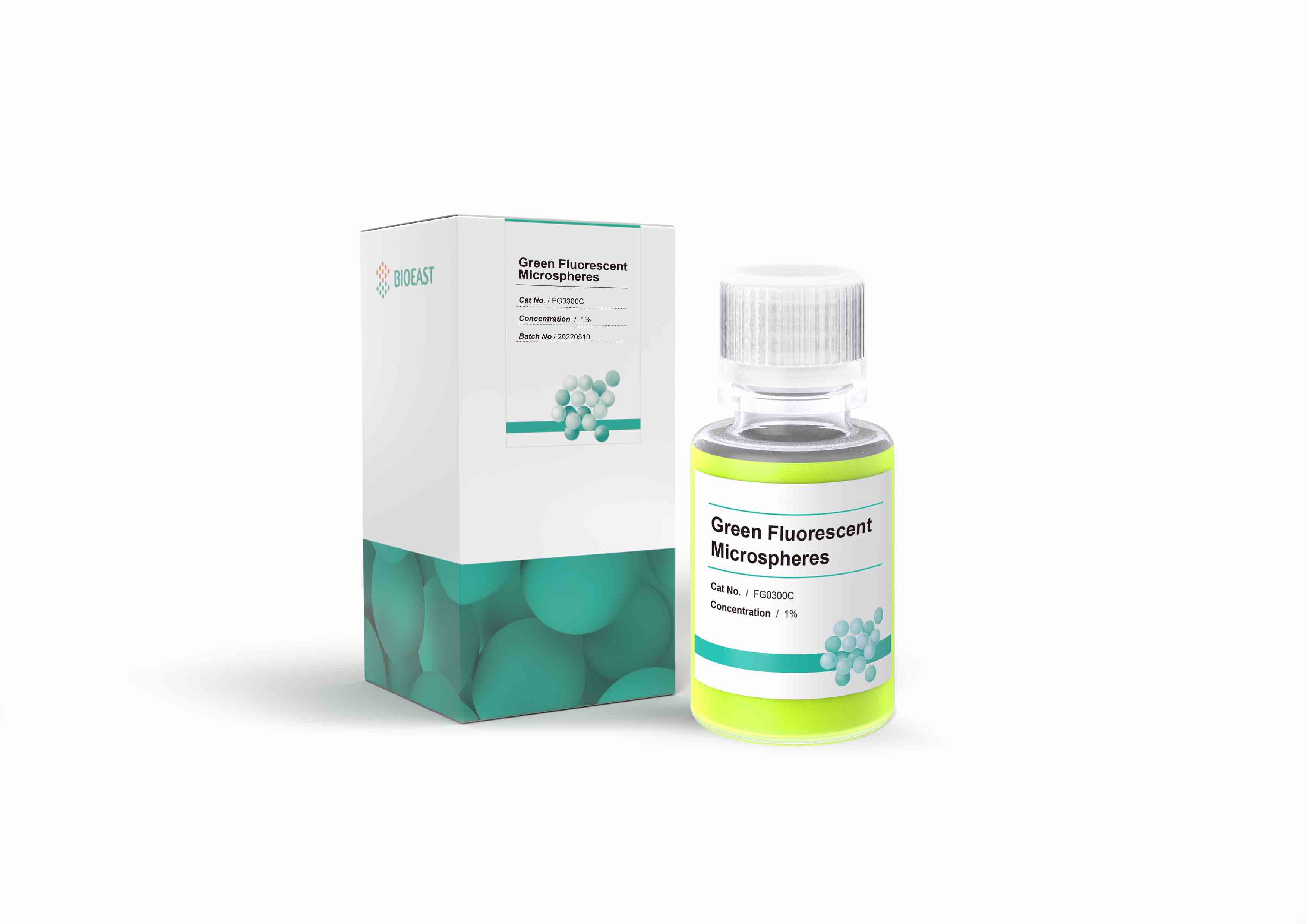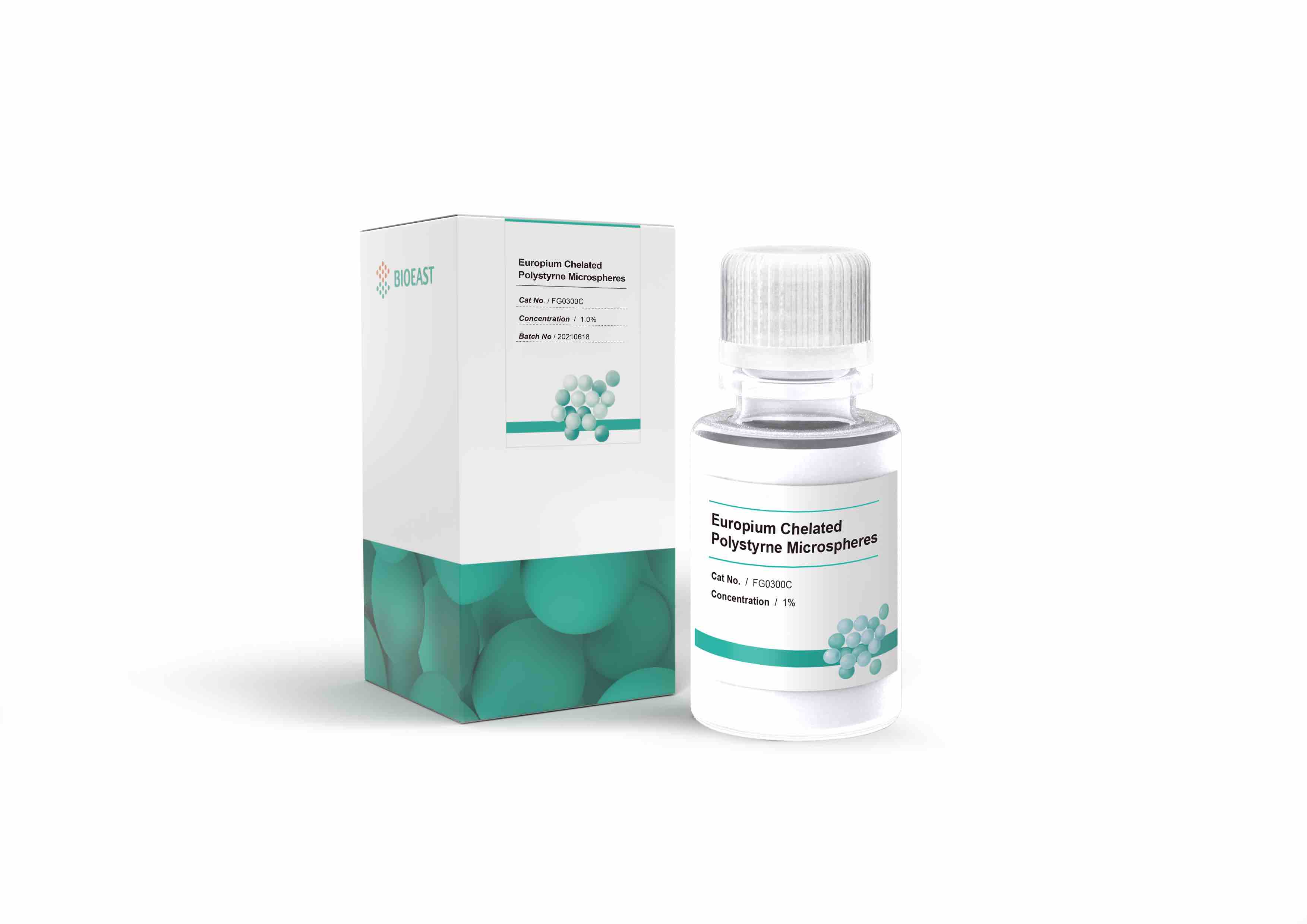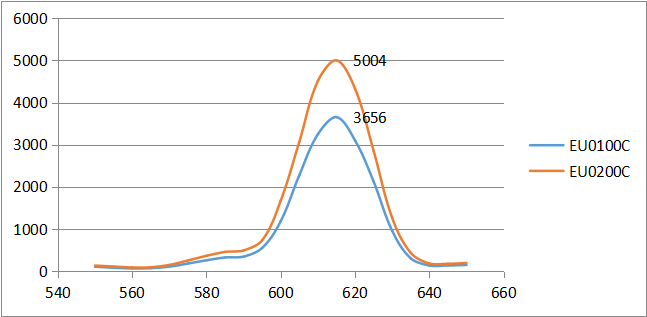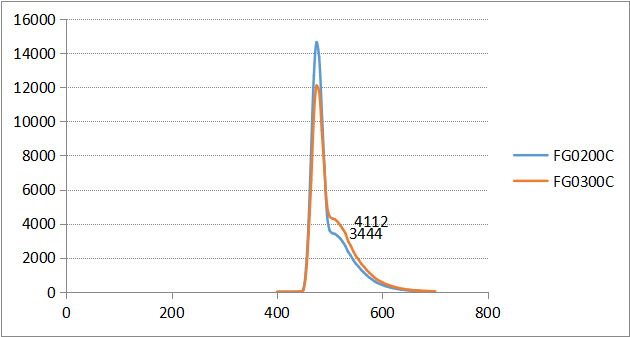News & Blogs 2024-04-08
Application of Fluorescent Microspheres & Time-Resolved Fluorescent Microspheres in Fluorescent Immunoassay Platforms

EN
CN
EN
News & Blogs 2024-04-08
Application of Fluorescent Microspheres & Time-Resolved Fluorescent Microspheres in Fluorescent Immunoassay Platforms
Fluorescent microspheres are small particles with fluorescent labeling capabilities commonly used in biological research and clinical diagnostics. These tiny yet powerful microspheres, composed of polymer matrices and fluorescent dyes, can label specific biomolecules such as antibodies or antigens and are used to detect target molecules on fluorescent immunoassay platforms.

Fluorescent Microspheres | BIOEAST Green Fluorescent Microspheres
1. High Sensitivity: Fluorescent microspheres produce strong and stable fluorescent signals capable of detecting low concentrations of target molecules.
2. Multiplex Detection:Different fluorescent dyes can be incorporated into microspheres, enabling simultaneous detection of multiple target molecules.
3. Wide Dynamic Range:Fluorescent microspheres have a broad detection dynamic range suitable for detecting target molecules at various concentrations.
The fluorescent immunoassay platform is a highly precise biological analysis tool that combines the advantages of immunology and fluorescence technology. It captures target molecules into the assay system through immune reactions and detects the presence and concentration of target molecules through fluorescent signals.
The application of fluorescent microspheres on fluorescent immunoassay platforms mainly includes the following aspects:
1. Labeling Antibodies or Antigens: Fluorescent microspheres are commonly used to label antibodies or antigens, enabling the detection of target molecules.
2. Enhancing Detection Sensitivity: The fluorescent signal of fluorescent microspheres can be amplified by fluorescent detection systems, thereby enhancing detection sensitivity.
3. Multiplex Detection: Fluorescent microspheres can simultaneously label multiple antibodies or antigens, enabling the simultaneous detection of multiple target molecules, improving detection efficiency and versatility.

Time-Resolved Fluorescent Microspheres | BIOEAST Europium Chelated Polystyrne Microspheres (pink)
Time-resolved fluorescent microspheres are a novel type of fluorescently labeled microspheres based on time-resolved fluorescence technology. They use the emission time delay of fluorescent signals to detect target molecules, offering advantages of high sensitivity and specificity suitable for more precise and reliable biological detection needs.
1. High Sensitivity and Specificity: Time-resolved fluorescent microspheres use long-lived fluorescent dye labeling, providing persistent fluorescent signals that enhance detection sensitivity and specificity.
2. Multiparameter Detection: Different fluorescent dyes can label different microspheres, with each dye emitting fluorescent signals at different time points, enabling multiparameter analysis.
3. Automated Detection: Suitable for automated platform detection, compatible with automated chromatography systems, enabling high-throughput sample processing and analysis, improving experimental efficiency.
1. Enhancing Sensitivity and Specificity: Time-resolved fluorescent microspheres can adjust the excitation and emission wavelengths and fluorescence lifetime to achieve higher signal-to-background ratios under background interference, thereby improving detection sensitivity and specificity.
2. Reducing Background Signal Interference: Due to the long fluorescence lifetime, time-resolved fluorescent microspheres can use delay time to distinguish target signals from background signals, reducing background signal interference and providing more accurate and reliable detection results.
3. Expanding Application Range: Time-resolved fluorescent microspheres are suitable for detecting low concentrations of biomolecules such as tumor markers and pathogen antigens, enabling high-sensitivity detection of low-abundance biomarkers, thereby expanding the application range of fluorescent immunoassay platforms.
4. High-Throughput Analysis: Time-resolved fluorescent microspheres combined with high-throughput detection technology can achieve rapid detection and analysis of large batches of samples, improving experimental efficiency and data processing speed.
5. Disease Diagnosis and Monitoring: Time-resolved fluorescent microspheres have significant applications in clinical diagnosis, enabling early disease diagnosis, disease monitoring, and efficacy evaluation, providing clinicians with more accurate and reliable diagnostic basis.
Fluorescent microspheres and time-resolved fluorescent microspheres have wide applications in clinical diagnosis, biomedical research, and drug screening. They can be used to detect various disease markers, study cell signaling, evaluate the activity and toxicity of candidate drugs, among others.
The application of fluorescent microspheres and time-resolved fluorescent microspheres on fluorescent immunoassay platforms provides a highly precise and sensitive solution for biological detection. With continuous technological advancements and expanding application scopes, they will play an increasingly important role in the biomedical field, contributing to the improvement of human health.

Fig 1. The Emission spectrum of EU0100C and EU0200C

Fig 2. The Emission spectrum of FG0100C and FG0200C
| PRODUCT NAME | CAT NO. | SURFACE GROUP | SIZE | CONCENTRATION | APPLICATION PLATFORM |
| Europium Chelated Polystyrne Microspheres (pink) | EU0100C | Carboxyl Group(COOH) | 100nm | 1% | FIA |
| EU0200C | Carboxyl Group(COOH) | 200nm | 1% | FIA | |
| EU0300C | Carboxyl Group(COOH) | 300nm | 1% | FIA | |
| EU0100S | Streptavidin(SA) | 100nm | 1% | FIA | |
| EU0200S | Streptavidin(SA) | 200nm | 1% | FIA | |
| EU0300S | Streptavidin(SA) | 300nm | 1% | FIA | |
| Green Fluorescent Microspheres | FG0200C | Carboxyl Group(COOH) | 200nm | 1% | FIA |
| FG0300C | Carboxyl Group(COOH) | 300nm | 1% | FIA | |
| FG0400C | Carboxyl Group(COOH) | 400nm | 1% | FIA | |
| FG0200S | Streptavidin(SA) | 200nm | 1% | FIA | |
| FG0300S | Streptavidin(SA) | 300nm | 1% | FIA | |
| FG0400S | Streptavidin(SA) | 400nm | 1% | FIA |